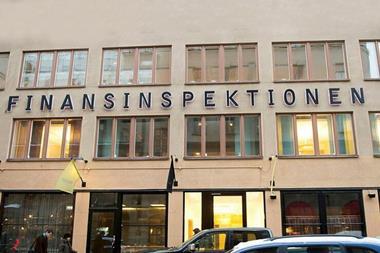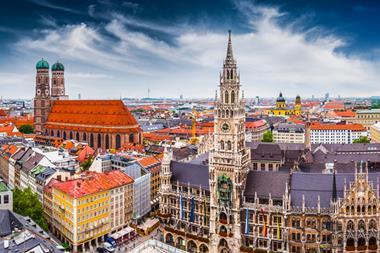Atlanta is experiencing challenges as a result of its incredible economic success. Low-density development has resulted in rampant growth throughout the urbanised area, covering farmland and forest with asphalt, subdivisions, and low-rise commercial buildings.
The region’s transport infrastructure, water and sewerage systems, trees, green space and air quality have all been impacted by the expansion and this has amplified a public demand for more responsible growth.
Atlantic Station was conceived as a response to this demand and has just celebrated its official opening. It is one of the largest brownfield developments in
the US, and has been co-led
by AIG Global Real Estate
and the Atlanta-based Jacoby Development.
Based on the former location of Atlantic Steel Mill, Atlantic Station’s site was environmentally contaminated and has undergone a $10m (e8.4m) remediation. The work involved the removal of 12,000 truckloads of soil, the reclaiming of 11 acres of green space, and the recycling of 150 cubic yards of materials.
When fully-developed the 138-acre, mixed-use facility will feature 1.5m ft2 of retail space including numerous restaurants, and entertainment venues. The project will house 6m ft2 of class-A office space (equivalent to three Empire State Buildings), 5,000 residential units and 1,000 hotel rooms. Located in the heart of mid-town Atlanta at the 1-75 and 1-85 interchange, the development has its own exit off the city’s main thoroughfare, which is used by more than 500,000 cars a day.
As a ‘smart growth’ project, Atlantic Station ticks a number of progressive boxes, such as integrating transportation investments with land use in a central location; increasing the variety of housing choices; and showing that high density residential living can be exciting, convenient, and in some ways superior to suburban tract homes.
By combining a jobs/housing/activities balance within walking distance, it also reduces the need to use cars, thereby reducing traffic and pollutants.
Atlantic Station won the 2004 Phoenix Award for best brownfield development, and its 171 17th Street building is the first high-rise office building in the world to receive LEED’s (Leadership in Energy and Environmental Design), Silver Core & Shell certificate, a benchmark for high-performance, sustainable buildings.
Atlanta has long been the economic powerhouse of the US southeast. The area’s quality of life, extensive infrastructure and relatively low cost of living has made it the leading job creator and one of the fastest-growing cities.
Over the next five years, the population of the greater Atlanta area is expected to grow by 11.9% compared with 4.8% for the US as a whole. Average household income is expected to increase 13.1% over the next five years, from $76,078 to $86,049.
On average, nearly 100,000 new residents are attracted to Atlanta annually, making it the nation’s leader in inward migration. Atlanta’s economy is gaining momentum after posting modest growth in 2004. Local employers are expected to expand employment by 2.7% this year, the area’s highest rate since 1999.
Atlanta originally served as the terminus of the nascent East Coast rail system and came into its own partly because of its rail hub status. This remains true today, with a 4,900-mile network of main and branch lines running throughout the state.
The Hartsfield-Jackson International Airport is one of the busiest in the world. More than 80m visitors pass through it annually and plans are in place to accommodate over 120m passengers by 2015.
Seven interstate highways service the metro area, providing excellent access throughout the city and region. Atlanta also has a rapid transit system in development called the Metropolitan Atlanta Rapid Transit Authority (MARTA). There are currently 38 stations and 48 miles of rail line open and Atlantic Station is connected to the system.
The city is also a major superhighway of fibre-optic networks partly due to the presence of telecommunication giants such as Lucent and Bell South. It is estimated that 28 long-haul cables converge in Atlanta compared with just eight in New York.
More than 700 of the Fortune 1000 firms have operations within Atlanta which is also a leading media
centre featuring companies such as CNN and the Turner Broadcasting System.
At mid-year, Atlanta’s net office absorption totalled 1m ft2, building on a strengthening market since 2004. This has been helped by limited new development activity– only 130,000 ft2 delivered in the first half of 2005.
With over $2.2bn in sales volume, 2004 was a banner year for office investment in metro Atlanta. Investors paid top dollar for assets in both urban and suburban markets. The appetite for class-A and B properties is quite high, and in some cases optimistic investors are purchasing assets with vacancy.
Developers and retailers are responding to strong consumer demand in Atlanta’s urban areas, which formerly lost out to the suburbs. The downtown and surrounding neighbourhoods are flourishing, boosted by redevelopment projects and an influx of residents.
Atlanta’s large population of young professionals has driven demand for urban living. Residential development is booming in central areas and this is fuelling urban retail. The overall retail vacancy rate of 8.7% will fall this year despite additions to supply. Retailers such as Target, IKEA, Dillard’s, Lowe’s, Wal-Mart, Neiman Marcus, Nordstrom and others are expanding. IKEA is opening its first store in the US Southeast at Atlantic Station where Dillard’s and Target are located. Strong consumer spending and healthy absorption are enabling owners to raise rents. The average asking rent is projected to increase by 2.5% to $16.87/ft2 by year’s end, while effective rents will rise 2.7%. The average concession is forecast to fall to three weeks’ free rent by year’s end.













